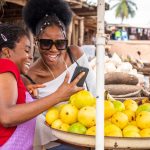Why you should visit Ghana, the gem of West Africa?
When I chose to do a month-long internship in Ghana, I didn’t know anyone who had ever been there.
I soon found out, though, that if they had been, they would not have stopped talking about it. My trip there introduced me to this beautiful country in West Africa and showed me that wild African tours aren’t the main thing to do here. In fact, there is so much more…
I found a place that was full of wonders and had something for all kinds of travelers. It has both off-the-beaten-path natural landscapes and busy coastal towns, as well as important reminders of a hard past.
You will feel welcomed
Ghanaians will give you a warm akwaaba (hello) when you arrive. This will be one of the first things you notice. During my first long-distance ride in a tro-tro, which is a large cargo van with bench seats and the main form of public transportation in Ghana, the man next to me said, “You’re invited,” and held out a bag of fried plantain chips as a gift.
Ghanaians are naturally friendly and willing to share what they have with others. This was shown to me over and over again as I moved around the country. It came in the form of last-minute offers to stay in their homes, warm meals of Indomie noodles, and proud tours of their neighborhood, even though they had other plans for that day.
Read more about 10 “facts” about Africa that just aren’t true
The mix of chaos and peace in the coastal capital
Ghana has more than 100 different kinds of people. When you go to Accra, the most popular city with over 2.27 million people, the capital city on the coast, you will get a sense of this ethnic mix.
If you want to learn everything there is to know about Ghanaian culture, go to Makola Market, which is the beating heart of Accra. Here, sellers in stalls or porters carefully balancing their goods on their heads show off the entrepreneurial spirit of Ghana. They sell everything from shoes to unrefined shea butter. Locally dyed and woven fabrics are the main reason people come to this market. Find a tailor in your area who can make you a traditional t-shirt or dress with the classic V-neckline from a fabric with a dashiki print in bright colors.
You can also try native Ghanaian dishes like Jollof rice at the market. This food has a spicy kick you won’t see coming. Let it teach you about the unexpected things you can find in Ghana.
Even though you can’t be sure that a trip to Makola will be a nice walk because of the high humidity and busy crowds, you can be sure that your senses will be piqued. In the controlled chaos, the mix of people talking, the smell of wood smoke from food stands, and the many things for sale will make your eyes fly in all directions.
The fact that Accra is on the coast is a plus because it means that the busy city center and the quiet coast meet. This place has a different sound. On the edge of Accra, Labadi Beach has a cool breeze from the Gulf of Guinea and reggae music that plays late into the night.
Labadi Beach Ghana Labadi Beach
As acrobats do their shows, you can dance to the beat of the djembe drums. The city is always busy, even during the week.
You can hear highlife music at the Republique bar, which is on a quiet side street in the Osu district. Highlife music is famous in West Africa and has its roots in Ghana. I loved to hang out on the terrace with both other tourists and locals and drink local Club beer while listening to live music. If you like singing, you should go on a Wednesday night.
SIGN UP FOR OUR NEWSLETTER FOR TRAVEL IDEAS, GIVEAWAYS, CONTESTS, AND MORE
Even Ghana’s animals are different.
Even though Ghana isn’t known for its wild safaris, you can’t forget about its scenery and parks. Take a tro-tro about three hours west of Accra and then go inland to get to Kakum National Park. This area was set up by locals to protect the rare and some threatened animals that live in the rainforest.
Don’t leave until you’ve (shakily) walked the Canopy Walkway. The views from 30 meters above the forest floor are breathtaking.
Rainforest in GhanaKeep an eye out for animals, which you can see from the bridges without getting in the way. The Diana monkey is one of them. This type of monkey is most busy in the early morning.
If you have more time, go to Mole National Park in the northwest. It is the biggest national park in the country. The park has a lot of different kinds of plants and animals, and its open Savannah woods is home to an amazing ecosystem.
Ghana will take you to a higher level.
You won’t get as high as you would by climbing Mount Kilimanjaro, but you might be shocked to learn that West Africa’s highest waterfall is in a small town in Eastern Ghana. It’s tucked away in the mountains that form a natural border between Ghana and Togo.
Waterfall Ghana
Wli waterfall
If you want to see the beautiful Wli Falls, which drop 143 meters, go to the town of Wli in the Volta Region. From here, you can hear French coming from the border with Togo. One of the best parts of my trip was the 45-minute walk a local took me on to the lower falls so I could soak in the pool of moving water there. On the way, I was happy to see colorful butterflies, wild pineapple, and the Agumatsa River running freely.
If you have more time, you could also spend the day looking around the upper falls. You can go on a hike through the lush grass and look at the funny trees and listen to the birds.
CHECK OUT OUR RANGE OF ADVENTURES FOR SMALL GROUPS IN GHANA
Ghana has a lot of history and is an important part of the story of Africa.
Ghana’s past is very important to understand the country. Go west along the coast to Jamestown, which is Accra’s oldest neighborhood. Visit the James Fort lighthouse, which was built in the colonial era. You can climb the circular stairs to the top and learn about its history, which goes back to the 1930s. Take in the 360-degree view of the town and see how the fishermen who live on the coast spend their days.
Jamestown also has the most boxing schools in one place, so it won’t be surprising to see two young men with gloves sparring in the middle of the street to practice their trade.
Accra GhanaKeep going west until you reach Cape Coast and stop by the Cape Coast Fort. The huge white stone building that looks out over the Atlantic Ocean is one of the best-preserved and biggest forts built in the 17th and 18th centuries. During the Atlantic slave trade, African men, women, and children were treated with shocking cruelty in the fort’s rooms.
Let the castle serve as a memory of the past and a contrast to modern Ghana, which is a beautiful, progressive place. It’s a unique place that you should visit. You won’t be sorry you did.




